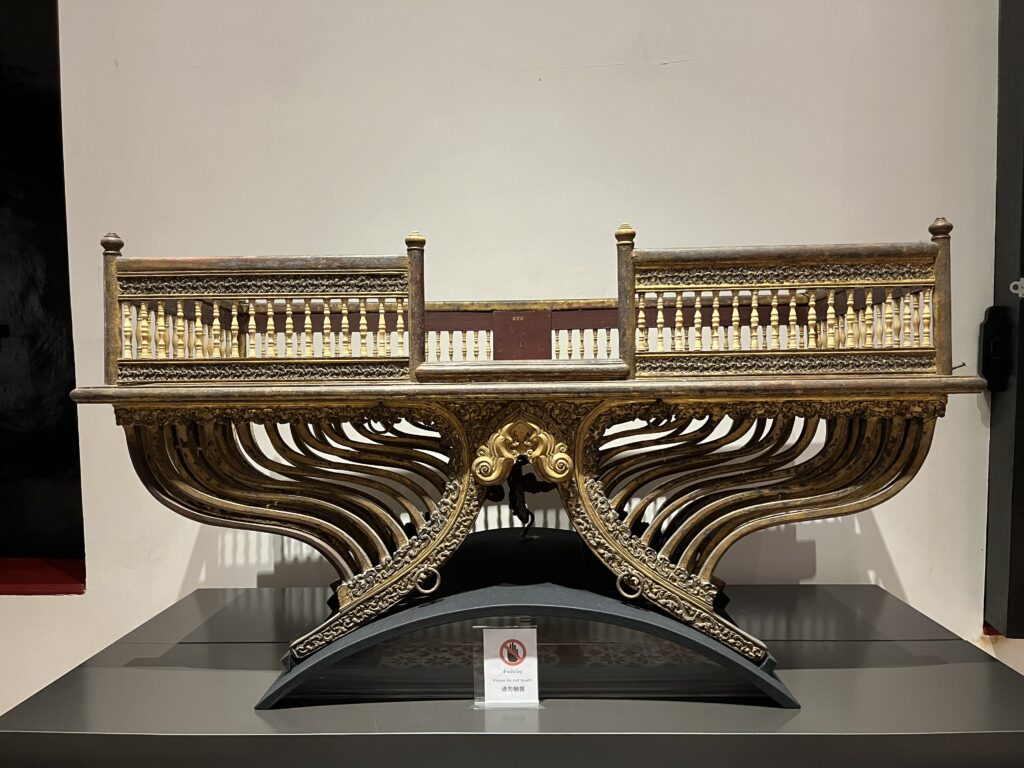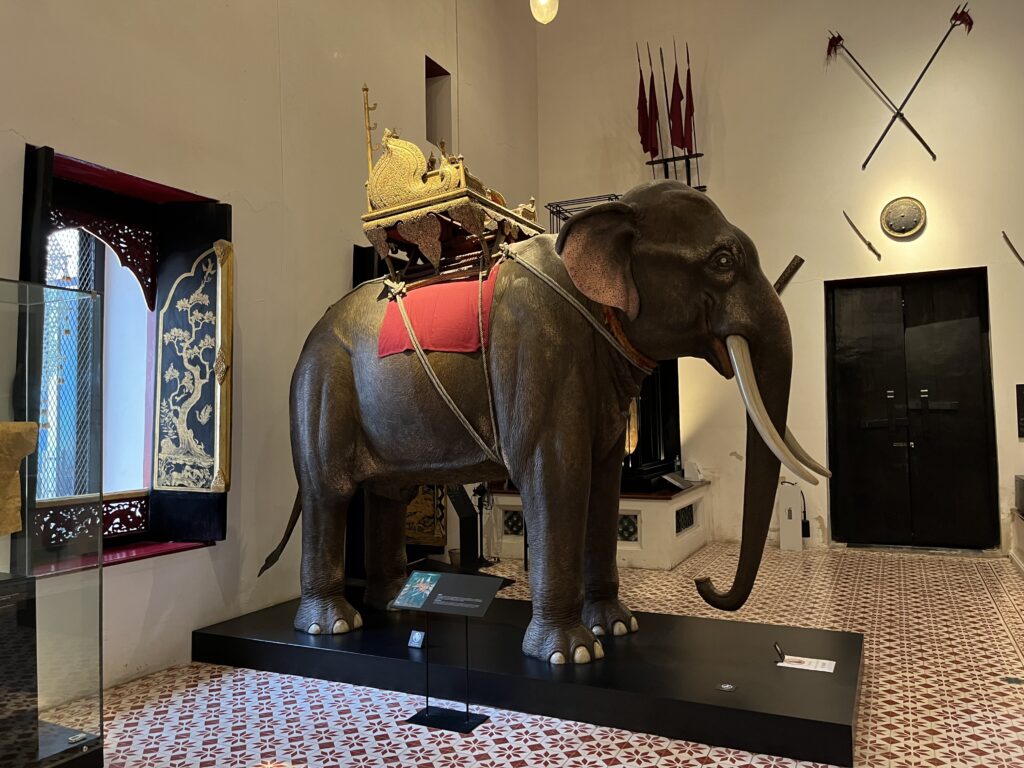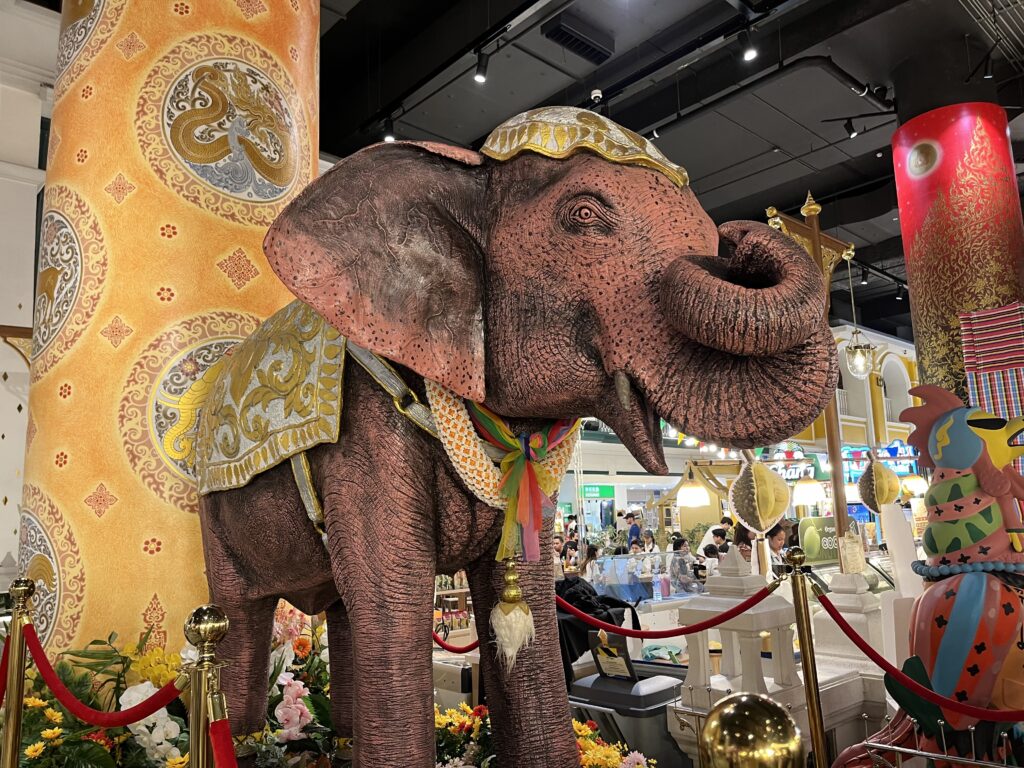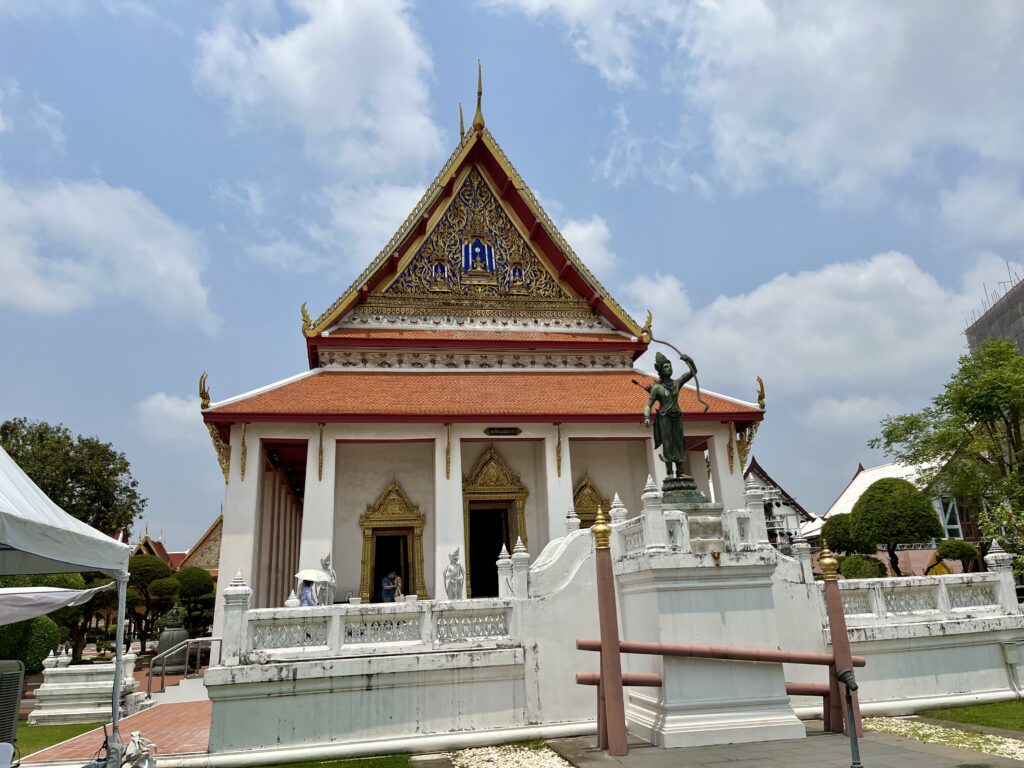




The Chao Phraya is a busy river running through the heart of Bangkok, although technically between Bangkok (the side of the Royal Palace) and Thonburi (the side of Wat Arun, where we were staying). The longtail boats (with a propeller powered by a truck engine at the end of a long shaft that also serves as the rudder) really zip along. Upper left, by the way, is a lock connecting one of the many canals to the river.
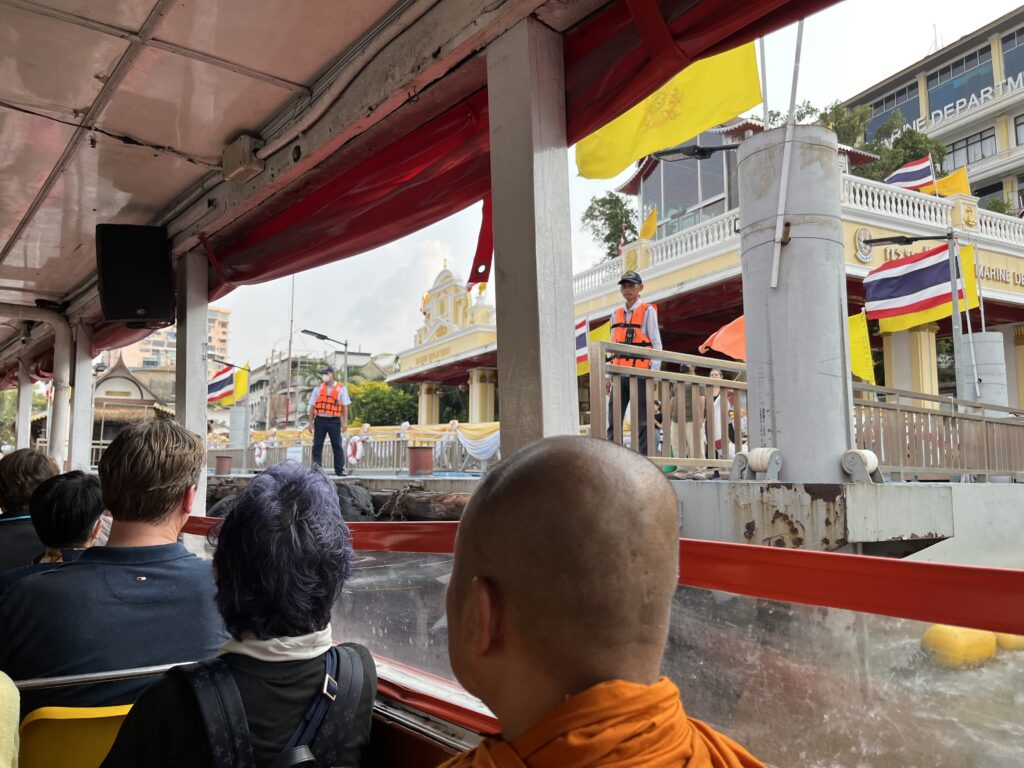
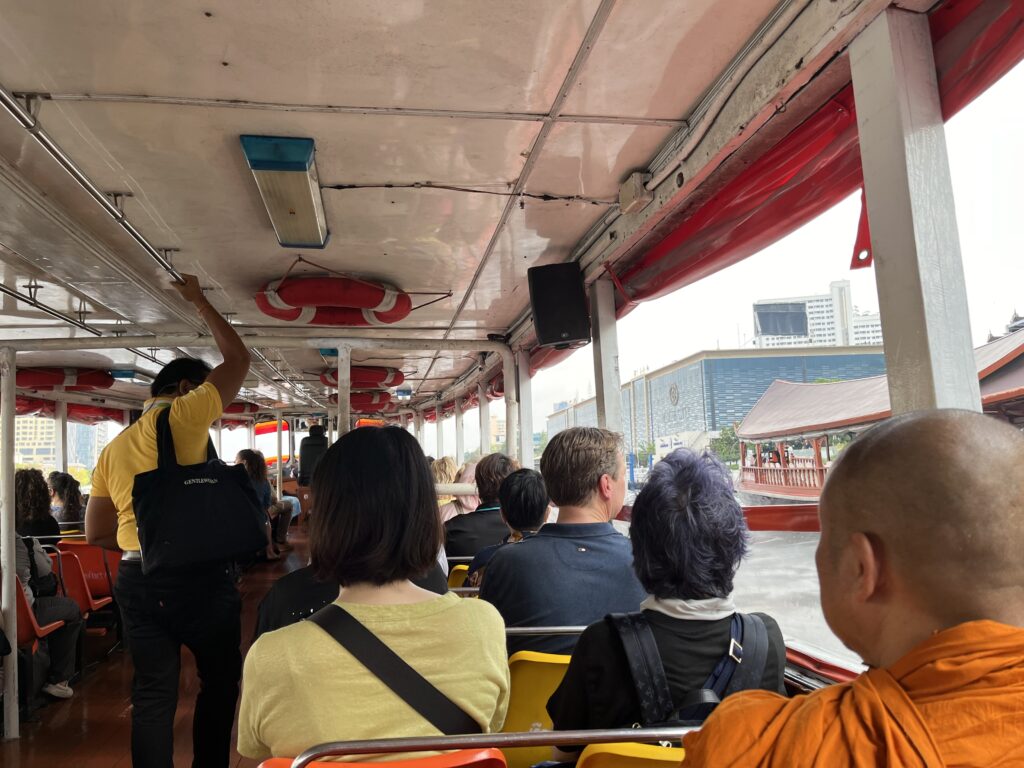
On our last day in Bangkok, before a late night flight, we took the public fast ferry to a stop not far from the National Museum. We were grateful that our six nights in Bangkok seemed to have earned us a very late checkout at the hotel since the extreme heat would make a pre-departure shower a welcome luxury.

The National Museum certainly lives up to its name (although there are additional locations around the country). It’s one of those museums where you’re feeling overwhelmed by the sheer quantity of fascinating material you’re seeing and then realize that you’ve only scratched the surface and you have room after room to go. Like the Met, only with more buildings.
The King Ram Khamhaeng Inscription (discovered at Sukhothai in 1833) had been moved into a special exhibition space along with other “priceless documents.” From 1292, it records the origin of the Thai script and language and provides a description of life in and the norms of the ancient city of Sukhothai (predecessor of Ayutthaya as the capital of the nation).

Of interest to us was the Treaty of Amity and Commerce between the United States and Siam, aka the Roberts Treaty, in a manuscript in Thai, Portuguese, Chinese, and English.


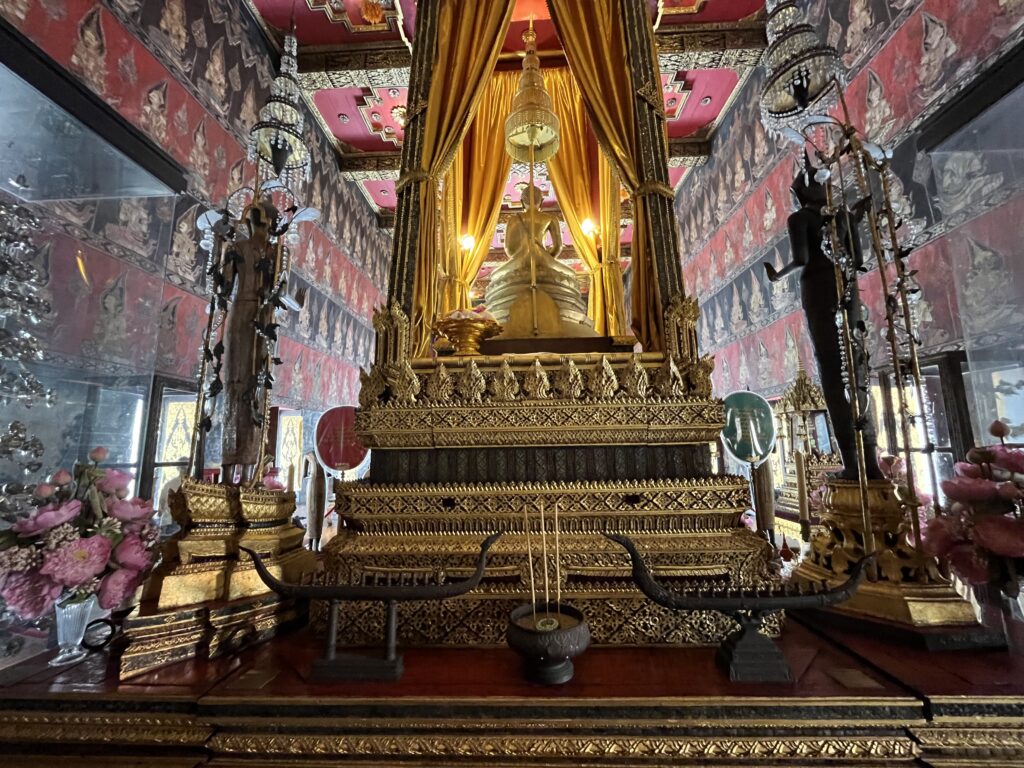
One of the holiest Buddha images in Thailand after the Emerald Buddha in the Grand Palace, Phra Buddha Sihing was brought to Bangkok in 1787 by Rama I from Chiang Mai and is thought to be from the 13th century. It presides in the Buddaisawan Chapel with some stunning murals surrounding it.





(One of those overwhelming “wow” spaces.)
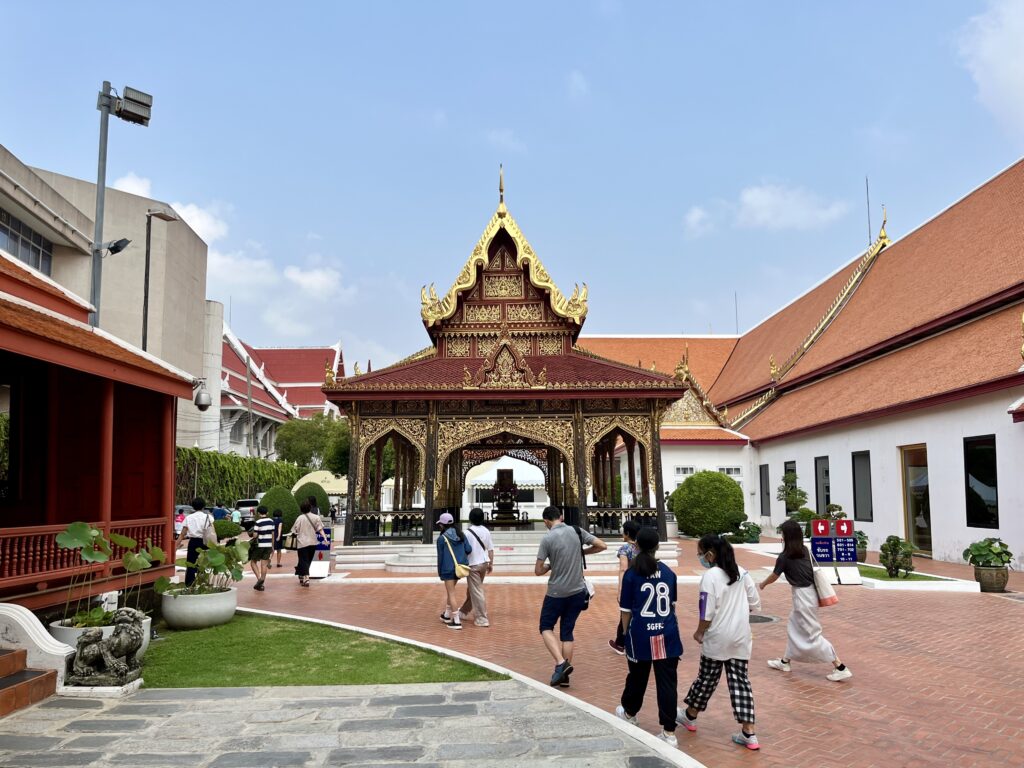
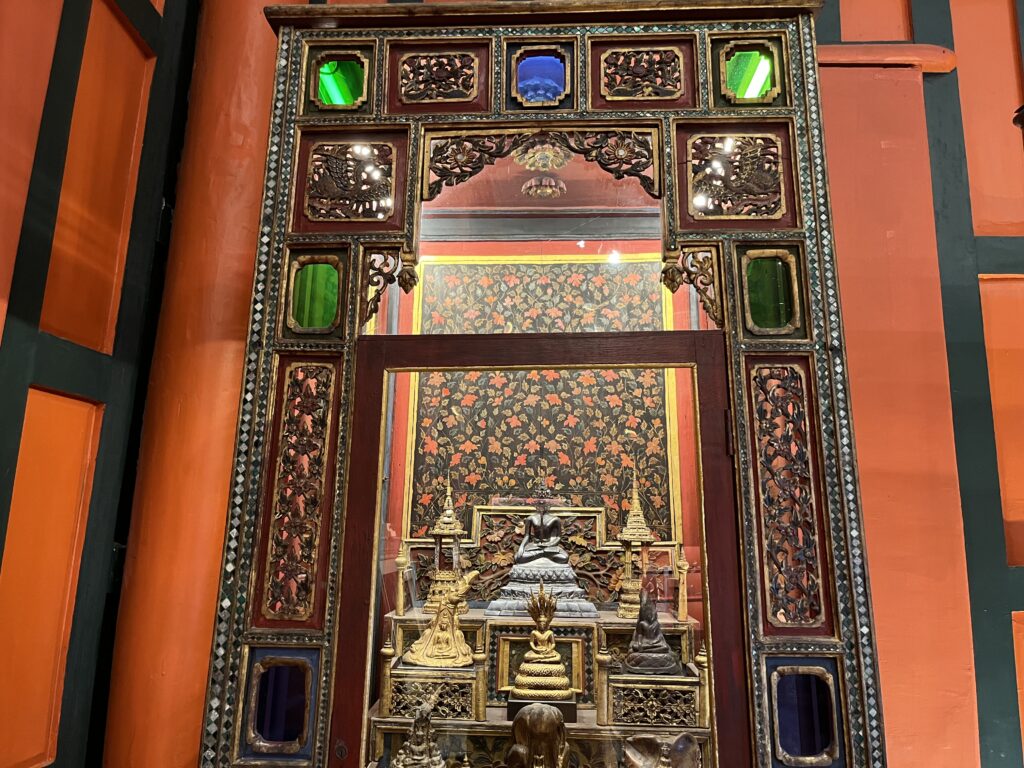
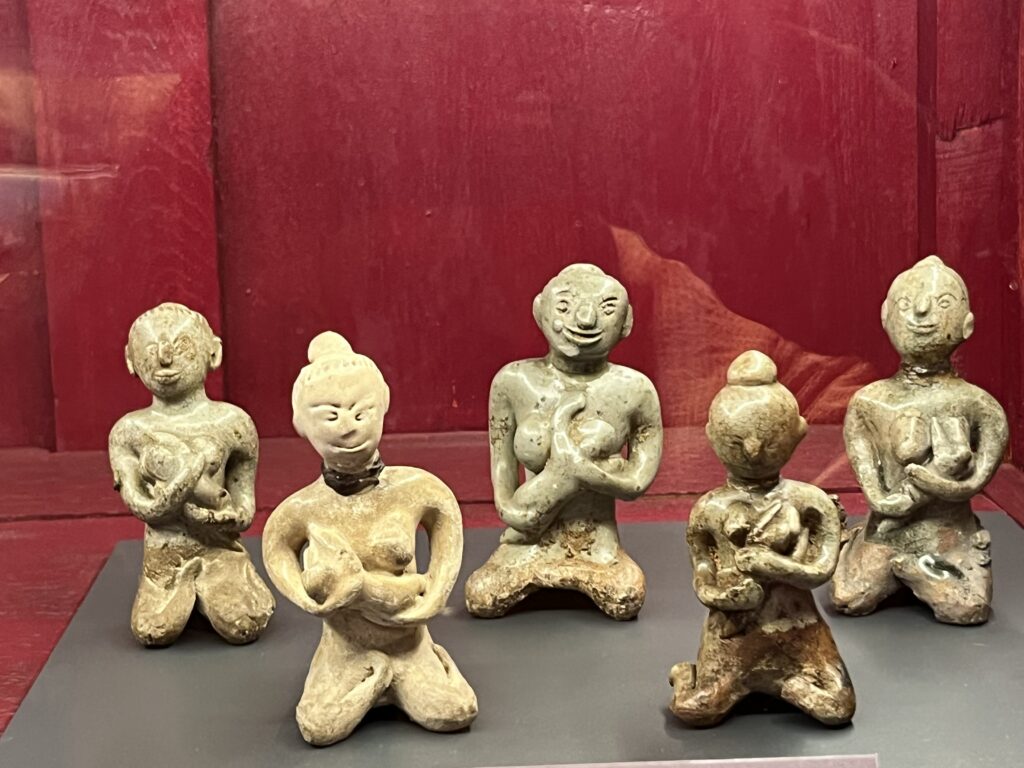
A comparatively small teak house, The Red House, is also among the many buildings on the Museum grounds. It had been the personal quarters of Rama I’s older sister, moved from Thonburi, and then of Rama II’s Queen. Among the artifacts on display were some mended figures (the heads re-affixed) that served as a sort of talisman or magical figure that would suffer death so that a human would not, but would be protected from harm.

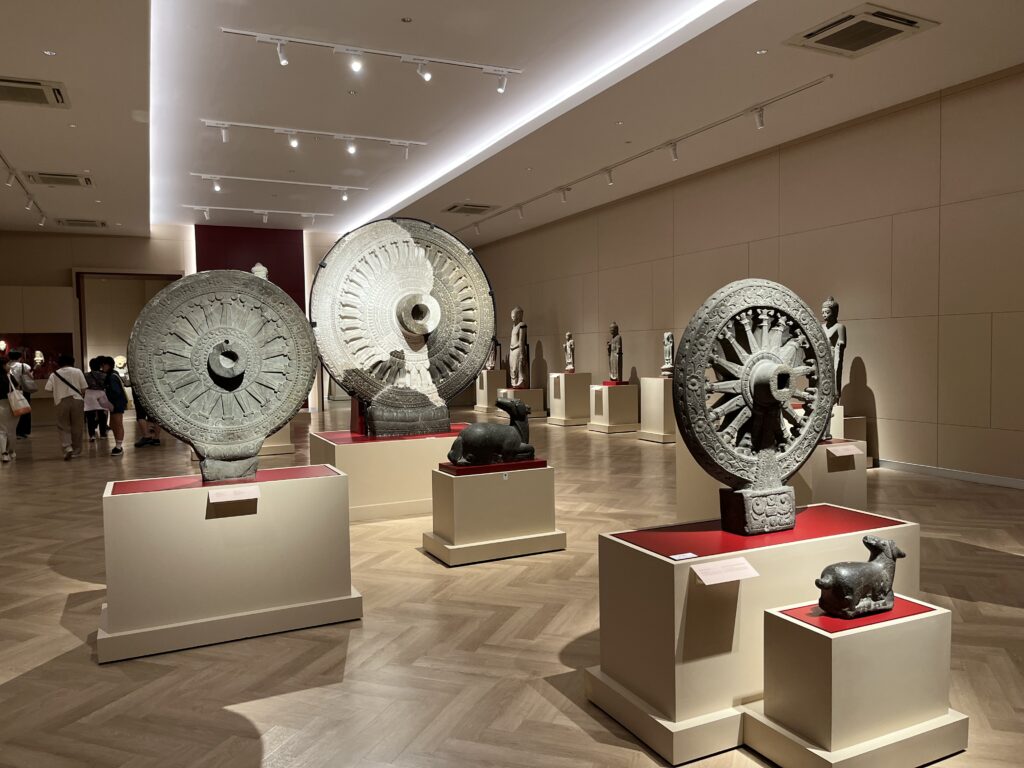
On the left, an 8th century stele from Ayutthaya Province depicting miracles at Savatthi where the Buddha spent most of his monastic life. On the right, multiple Dhamma wheels, each symbolizing the Buddha’s teachings. After reaching enlightenment, the Buddha set the wheel of Dhamma in motion with his first sermon in Sarnath.







All 6-12th centuries, all from Thailand, except Ganesh, a gift of the Dutch from Java.
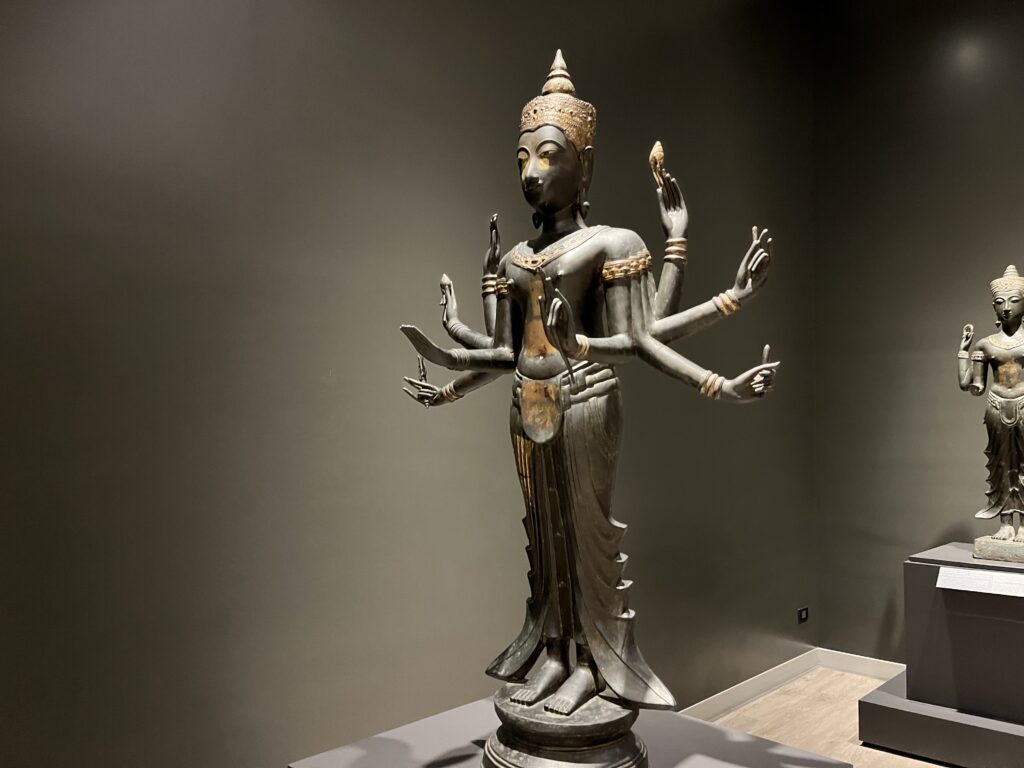
From 13th century Sukhothai, the bronze Harihara is a synthesis of Shiva and Vishnu, i.e. “All is One,”and the highest god for followers of both Shiva and Vishnu, combining the powers of Shiva who destroys the world in order to build a new one and Vishnu who protects and maintains the world.





Royal insignia, a palanquin, Royal thrones, battle drums to signal troops to advance with prayers written in Khmer characters and the Pali language, all from the 19th century.

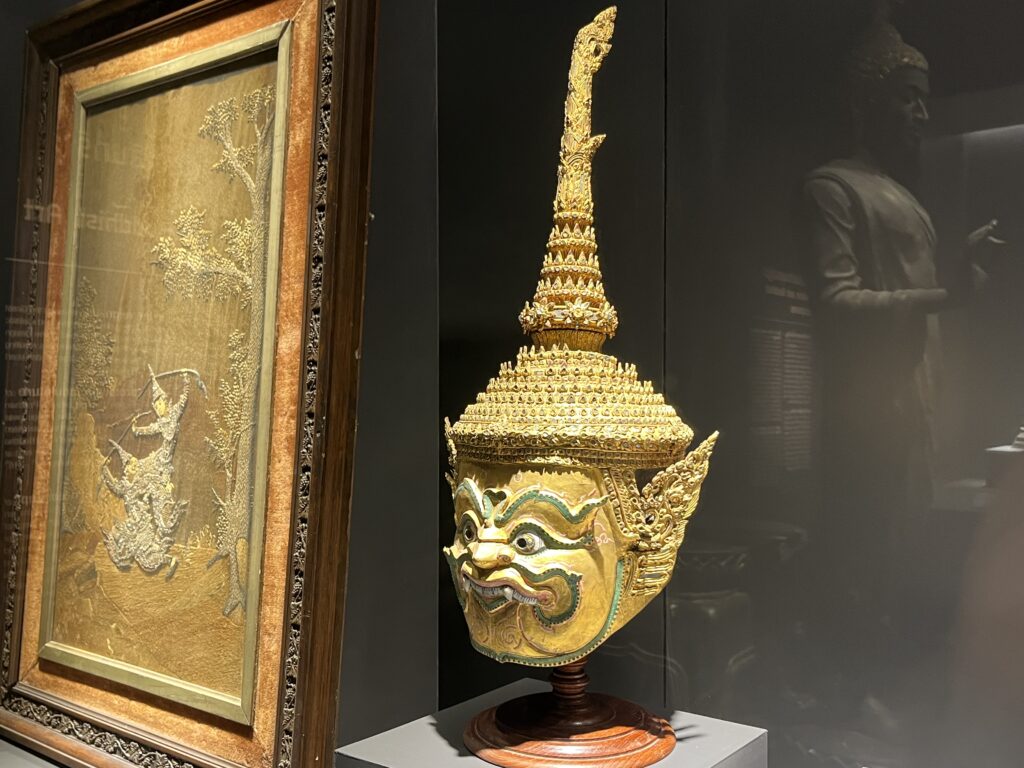
Khon performance dates from Ayutthaya and is an all-male dance performance to narration and music, typically of stories from the Ramayana.

